International
Several Common Fallacies on the Taiwan Question
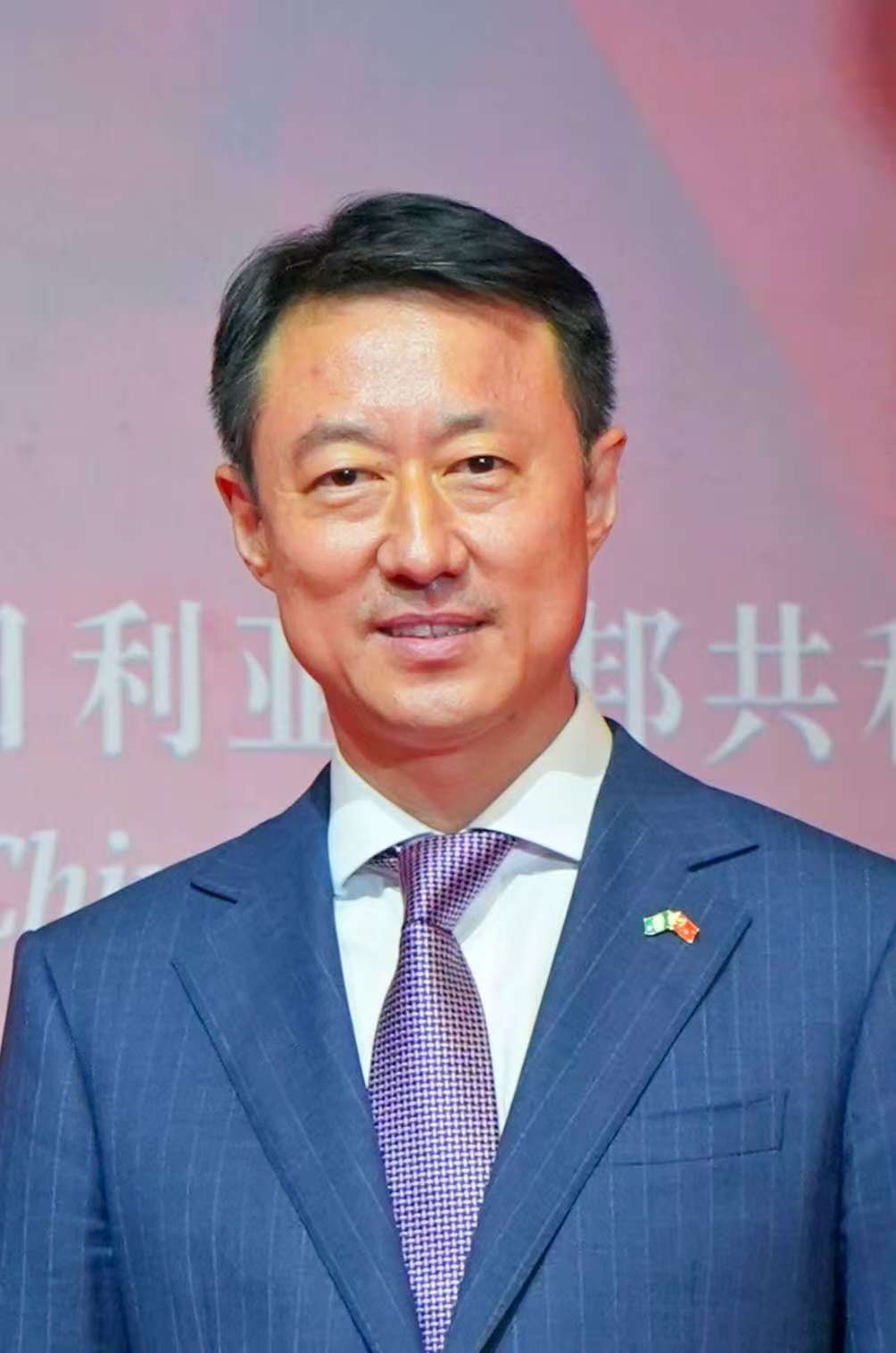
Several Common Fallacies on the Taiwan Question
By: Ambassador Yu Dunhai
The 80th session of the United Nations General Assembly recently concluded successfully. This was a session of special significance, as it marks the 80th anniversary of the victory in the global anti-fascist war and the establishment of the United Nations.
Over the past 80 years, the UN has become the most universal, representative and authoritative intergovernmental international organization, with the UN-centered international system widely supported by the international community.
Eighty years ago, defeated Japan returned Taiwan to China, which was an indisputable outcome of the global anti-fascist war and a crucial part of the post-war international order. Currently, the Taiwan Democratic Progressive Party (DPP) authorities stubbornly adopt a separatist policy seeking “Taiwan independence” , while a small number of countries claim that China’s sovereignty over Taiwan has not been established, openly challenging the authority of the UN and the post-war international order. To clarify the facts and set the record straight, I feel obligated to address several common fallacies on the Taiwan Question.
Fallacy 1: “The two sides of the Taiwan Strait are not subordinate to each other.”
Taiwan has belonged to China since ancient times, with clear historical and legal foundations. Numerous historical records and documents detail the early development of Taiwan by the Chinese people.
As early as the 12th century, the Chinese government established administrative institutions and exercised jurisdiction in Taiwan. In 1895, Japan forced the Qing government to cede Taiwan and the Penghu Islands to Japan through war. In 1943, the Cairo Declaration issued by China, the United States and the United Kingdom stipulated that all the territories seized by Japan including Taiwan must be returned to China.
In 1945, the Potsdam Proclamation issued by China, the United States, the United Kingdom and the Soviet Union reaffirmed that the terms of the Cairo Declaration must be implemented. In August of that year, Japan accepted the Potsdam Proclamation and signed the Instrument of Surrender in September, pledging to “faithfully fulfill the obligations laid down in the Potsdam Proclamation.”
Through a series of internationally legally binding documents, China recovered Taiwan both legally and in fact. Although the two sides of the Taiwan Strait have not yet achieved complete reunification, the fact that both the mainland of China and Taiwan belong to one China and that Taiwan is an inalienable part of China has never changed and cannot be changed. This is the true status quo of the Taiwan Strait. Taiwan has never been a country, nor will it ever be in the future.
Fallacy 2: “China’s sovereignty over Taiwan has not been established.”
Shortly after the victory in the War of Resistance Against Japan in 1945, the Nationalist government led by Chiang Kai-shek launched a civil war. Under the leadership of the Communist Party of China, the Chinese people won the civil war, ultimately overthrowing the “Republic of China” government led by Chiang Kai-shek. Some members of the Nationalist regime retreated to Taiwan, and with interference from external forces, the two sides of the Taiwan Strait entered a prolonged state of political confrontation.
On October 1, 1949, the Central People’s Government of the People’s Republic of China (PRC) was established, and the PRC government became the sole legitimate government of China. This was a change of government within the same international legal entity of China, with no change to China’s sovereignty or inherent territory. The PRC government naturally enjoys and exercises China’s sovereignty in full, including sovereignty over Taiwan.
Fallacy 3: “UN General Assembly Resolution 2758 does not establish the One-China principle.”
Resolution 2758 fully embodies the One-China principle. On August 20, 1971, before the resolution was put to a vote, the Chinese government issued a statement emphasizing: “There are not two Chinas in the world; there is only one China, the People’s Republic of China. Taiwan is an inalienable part of Chinese territory and a province of China, which was returned to the motherland at the end of World War II. This is an indisputable fact.”
On October 25, 1971, the 26th session of the UN General Assembly adopted Resolution 2758, which decided to “restore all the rights of the People’s Republic of China, recognize the representatives of its government as the only legitimate representatives of China to the United Nations, and expel forthwith the representatives of Chiang Kai-shek from the place which they unlawfully occupy at the United Nations and in all the organizations related to it.”
Resolution 2758 politically affirmed and consolidated the One-China principle: there is only one China in the world, Taiwan is a part of China, and the PRC government is the sole legitimate government representing all of China. Following the resolution’s adoption, UN official documents consistently refer to Taiwan as “Taiwan, Province of China.” These facts are indisputable and unchallengeable.
Fallacy 4: “UN General Assembly Resolution 2758 does not determine Taiwan’s status.”
Resolution 2758 and the One-China principle that the Resolution embodies impose universal binding force on all subjects of the international community through the UN Charter, bilateral diplomatic treaties, and fundamental principles of international law.
In diplomatic practice, the resolution’s authority is reflected in the correct Taiwan-related positions, policies, and actions of the UN General Assembly, UN specialized agencies and many UN member states.
These collectively form an important international legal and moral foundation for handling Taiwan-related questions. The One-China principle, framework, consensus and related institutional arrangements supported by the resolution have become principles and common knowledge followed by all countries, as well as a solemn commitment by countries with diplomatic relations to respect China’s sovereignty and territorial integrity.
The claim by a few countries that “Taiwan’s status is undetermined” challenges the authority of the UN, defies the post-war international order, and is an absurd and dangerous attempt to reverse history.
Fallacy 5: “Now is the time for the UN to recognize Taiwan.”
According to Resolution 2758, China’s representation in the UN naturally includes Taiwan as part of the whole of China. This is entirely consistent with the international legal principle that “one sovereign state can only be represented by one central government.” There is only one seat for China in the UN, and the PRC government is the sole legitimate representative of China in the UN. There is no issue of “two Chinas” or “one China, one Taiwan.”
The Taiwan authorities have repeatedly pushed for farcical attempts to achieve “meaningful participation” or “re-entry” into the UN, trying to challenge the authority of Resolution 2758, but all ended up in failure.
Resolution 2758 clarifies that “China” in the UN Charter refers to the People’s Republic of China, imposing an obligation on all UN member states to avoid raising the so-called issue of Taiwan’s representation in the UN system. Taiwan has no basis, reason or right to participate in the UN or other international organizations exclusive to sovereign states. On this matter of principle, there is no gray area or room for ambiguity.
The One-China principle has become an international consensus, with 183 countries including Nigeria, establishing diplomatic relations with China based on this principle. In 1971, when China and Nigeria established diplomatic relations, Nigeria solemnly pledged in the Joint Communiqué: “The Government of the Federal Republic of Nigeria recognizes the Government of the People’s Republic of China as the sole legitimate government representing the entire Chinese people.” Since then, the One-China principle has been firmly supported by successive Nigerian governments, serving as the cornerstone for the healthy and stable development of China-Nigeria relations.
The Nigerian government requested the Taiwan authorities to relocate its trade office to Lagos from Abuja in 2017, strictly restricted official interactions between Nigerian government officials and Taiwan, and reiterated that the Taipei trade office in Nigeria is a non-diplomatic commercial entity that does not represent any government.
In September 2024, during President Bola Ahmed Tinubu’s state visit to China, Nigeria reiterated in the Joint Statement: “Nigeria firmly adheres to the One-China principle, recognizes that there is only one China in the world, that the Government of the People’s Republic of China is the sole legitimate government representing the whole of China, and that Taiwan is an inalienable part of Chinese territory. Nigeria opposes any form of ‘Taiwan independence,’ opposes interference in China’s internal affairs, and firmly supports the Chinese government’s efforts to achieve national reunification.”
China highly appreciates the Nigerian government’s firm stance on the Taiwan Question. Nigeria’s political resolve and firm stance align with the fundamental interests of the Nigerian nation and people, the purposes and principles of the UN Charter, and the global landscape of one China.
Currently, the China-Nigeria comprehensive strategic partnership continues to deepen, with friendly cooperation becoming a model for China-Africa cooperation and Global South collaboration. China is willing to strengthen strategic communication and practical cooperation with Nigeria, promote the early implementation of a zero-tariff policy for 100% of tariff lines on products, enhance collaboration under the framework of Global Governance Initiative, and jointly build a China-Nigeria community with a shared future.
We hope that all peace-loving countries and peoples will stand on the side of historical justice, uphold the purposes and principles of the UN Charter, safeguard the authority of UN General Assembly Resolution 2758, firmly oppose the deliberate distortions by the Taiwan authorities and a few countries, and take concrete actions to support the Chinese people’s just cause of defending national sovereignty and territorial integrity and achieving national reunification.
Several Common Fallacies on the Taiwan Question
International
UK, Nigeria Deepen Digital Cooperation Through Benchmarking and Knowledge Exchange
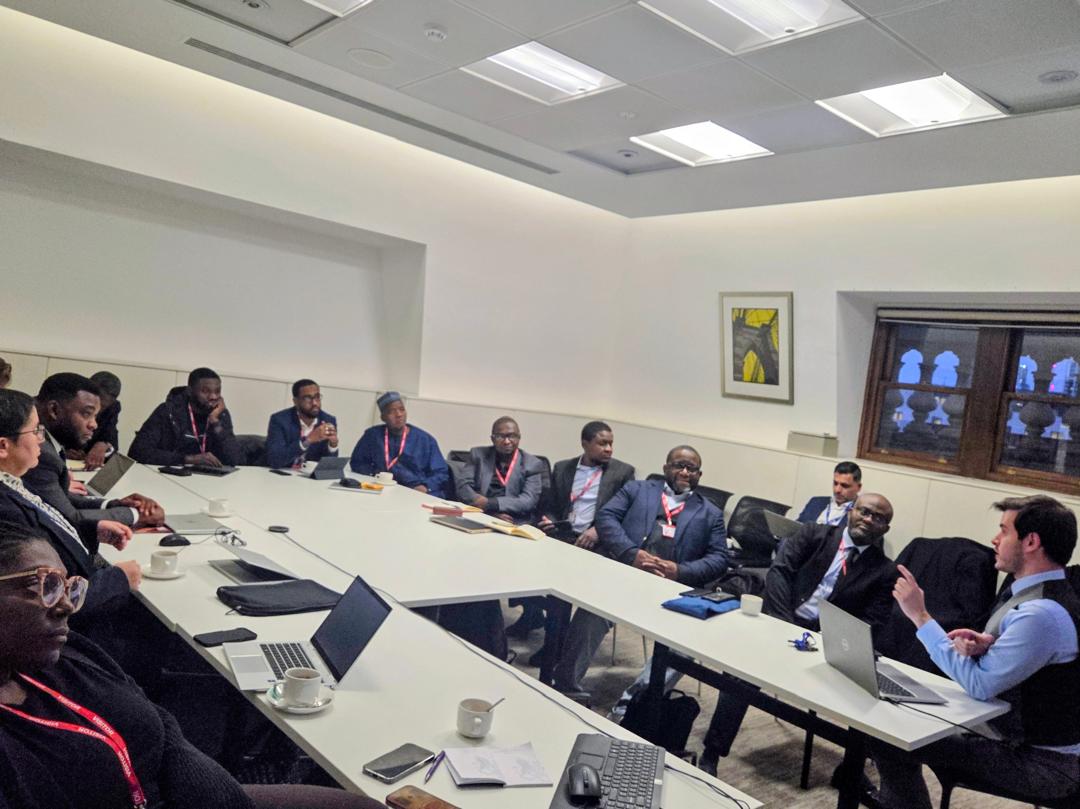
UK, Nigeria Deepen Digital Cooperation Through Benchmarking and Knowledge Exchange
By: Michael Mike
The United Kingdom and Nigeria have advanced their strategic partnership through a high-level international benchmarking and knowledge exchange tour focused on end-to-end clearance of IT projects and procurement of public digital products and services.
Hosted by the UK Foreign, Commonwealth & Development Office (FCDO), through its Digital Access Programme, in collaboration with leading UK digital governance institutions, including Government Digital Service (GDS), Public Digital, Crown Commercial Service (CCS), British Standards Institute, and the FCDO Cyber Policy Department, the programme brought together senior officials from Nigeria’s National Information Technology Development Agency (NITDA), Galaxy Backbone Limited (GBB), Nigeria Data Protection Commission (NDPC), for a week-long engagement in London from 23 to 28 November 2025.
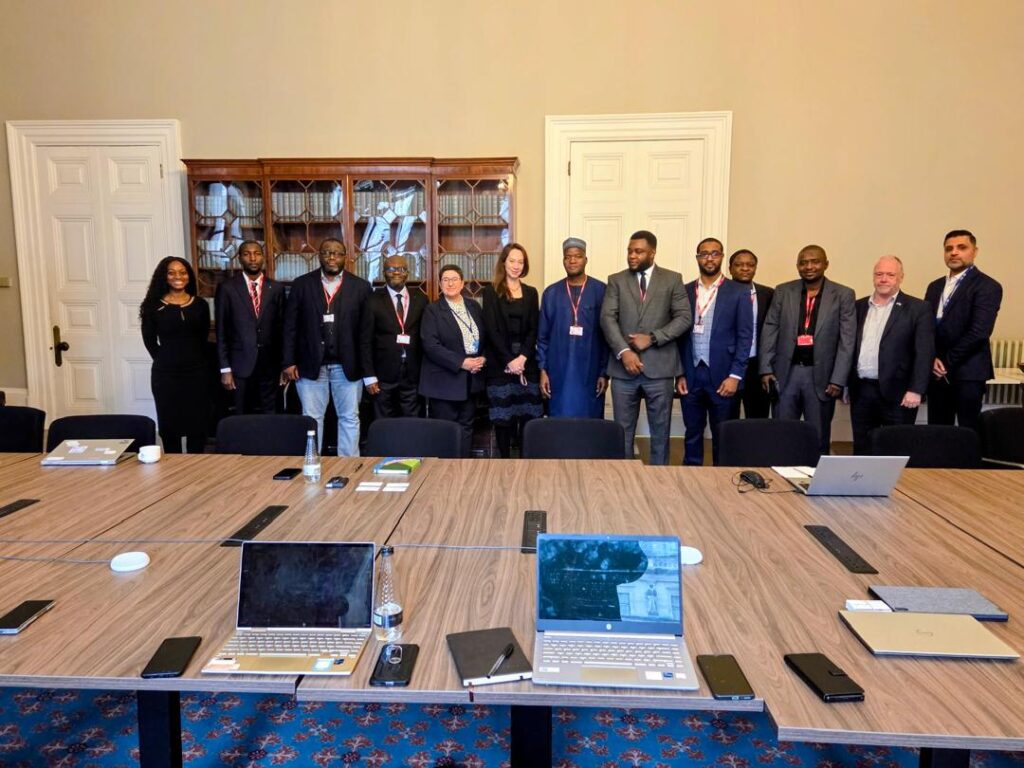
The programme built on the UK–Nigeria Strategic Partnership’s pillars of economic development, governance reform, and technology cooperation, ensuring that both countries leverage digital innovation to drive inclusive growth and secured public services.
A statement on Wednesday by FCDA said for Nigeria, this engagement will inform the enhancement of NITDA’s IT Project Clearance, improve procurement efficiency, and embed global best practices in cybersecurity, digital and data governance of public digital services. This engagement reinforces the UK’s role as a trusted partner for Nigeria’s inclusive digital transformation journey as well as open access to the UK technology supply chain for the Nigerian market.
While delivering the opening remarks, Kashifu Inuwa Abduallahi, NITDA Director General represented by Dr Usman Gambo Abdulahi, the Director IT project Clearance Unit said: “At the heart of Nigeria’s reforms is our determination to improve government service delivery, reduce waste, strengthen cybersecurity, and build trust in public digital systems. Modernising the IT Projects Clearance process therefore is a key enabler to achieving this vision. I commend the UK’s FCDO through the Digital Access Programme for its consistent support to Nigeria’s digital transformation journey. I thank UK Government and its various departments for agreeing to share insights and expertise that will certainly strengthen our institutions and our nation’s governance capacity”.
The FCDO’s Director for International Science and Technology, Ros Eales, said:
“Nigeria is a key partner of the UK in the tech sector. Working with partner countries like Nigeria is to ensure that digital transformation works for all and is safe, secure, and sustainable. This becomes even more important in an era of rapid technological evolution, accelerated by AI, with all its benefits to reap and risks to manage.”
the British deputy high commissioner in Lagos, Jonny Baxter, said: “The UK is proud to stand as a key partner to Nigeria, leveraging our expertise to drive knowledge exchange in digital governance and institutional reform. This technical collaboration underscores our longstanding commitment to Nigeria’s digital transformation and to building strategic partnerships that deliver shared economic growth for both nations.”
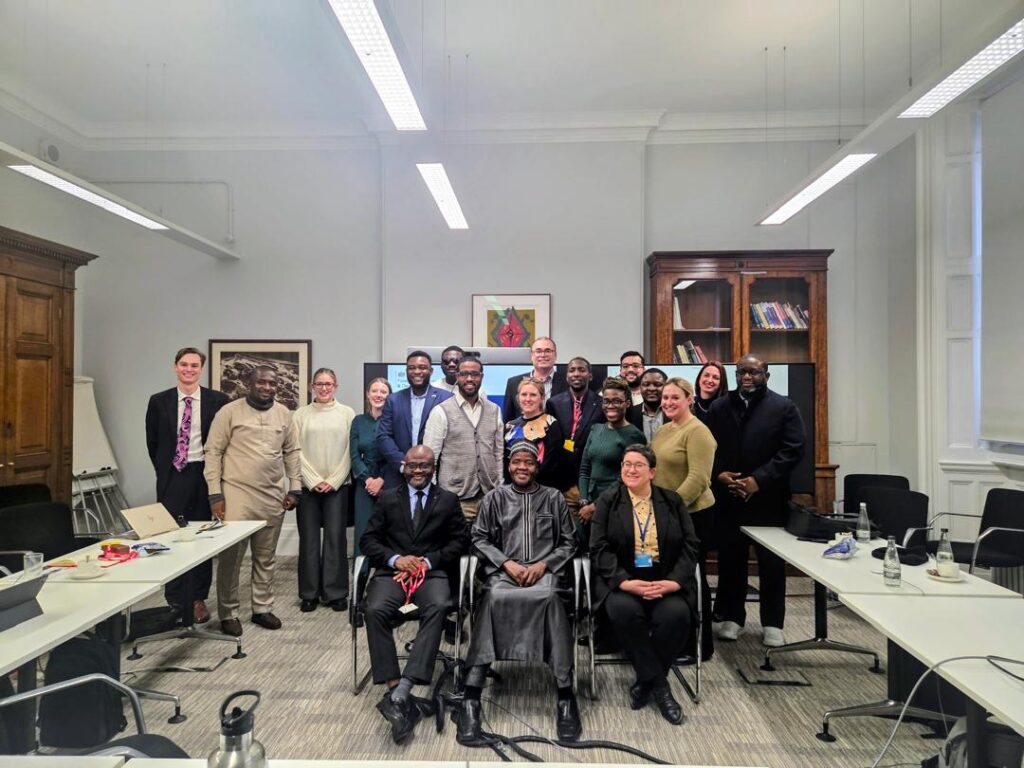
Head of Digital Development in FCDO London, and global lead of the UK Digital Access programme (DAP), Alessandra Lustrati, presented the Digital Development Strategy 2024-2030 to the Nigerian delegation and highlighted the importance of supporting best practices in the digital transformation of government, to ensure digital services are accessible, open, and citizen-driven, within a safe and secure digital environment
UK, Nigeria Deepen Digital Cooperation Through Benchmarking and Knowledge Exchange
International
United Kingdom, Canada, Australia Launch Campaign Against Visa Fraud
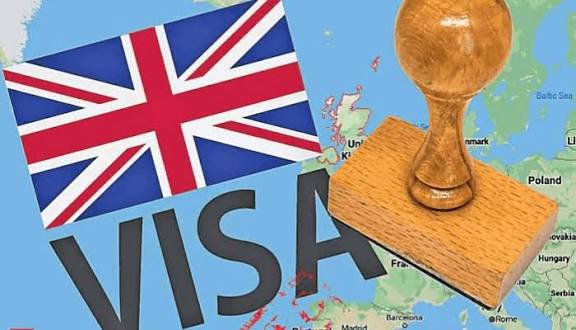
United Kingdom, Canada, Australia Launch Campaign Against Visa Fraud
By: Michael Mike
The Diplomatic Missions of the United Kingdom, Canada and Australia have announced the launch of a coordinated international campaign to combat visa fraud and protect people from exploitation by fraudulent immigration facilitators.
According to a statement on Monday, the #FightingVisaFraud campaign was launched during International Fraud Awareness Week (16-22 November) and represents an unprecedented level of cooperation between the three countries to tackle a shared global threat that costs victims millions of pounds annually and puts vulnerable people at risk of exploitation, financial ruin and legal consequences.
The statement read: “Visa fraud and illegal immigration facilitation have reached alarming levels globally, with criminal networks using increasingly sophisticated tactics to deceive prospective visa applicants. Victims are often promised guaranteed visas, jobs without proper qualifications, or expedited processing in exchange for exorbitant fees. The reality is financial loss, visa refusals, travel bans and, in the worst cases, trafficking and exploitation.
“Our countries have identified common patterns of visa fraud affecting their immigration systems. This coordinated campaign demonstrates the three countries’ commitment to protecting legitimate visa applicants while maintaining the integrity of their immigration systems and secure borders.”
British High Commissioner to Nigeria, Dr. Richard Montgomery said: “Visa fraud destroys dreams and devastates families. Criminal facilitators prey on people’s legitimate aspirations for a better life, stealing their money and putting them at risk of serious harm. Through this joint campaign with our international partners, we are sending a clear message: use only official channels, verify all advice, and report suspicious activity. The UK welcomes legitimate visa applications through proper routes – but those who attempt fraud face serious consequences, including 10-year travel bans.”
Canadian High Commissioner to Nigeria, Mr. Pasquale Salvaggio added: “Canada is committed to working with our international partners to combat visa fraud and protect people from exploitation. This campaign reflects our shared values and determination to maintain fair, secure immigration systems while supporting those who seek to travel, study or work through legitimate pathways.”
The statement added: Our three countries urge prospective visa applicants to: Use only official government websites for visa information and applications; Verify immigration advisers are properly registered and regulated; Be suspicious of guarantees, no one can guarantee visa approval; Watch for warning signs including demands for excessive fees, pressure to pay quickly, promises of jobs without proper qualifications, or offers to bypass standard requirements; Report suspicious activity to the relevant authorities.
The statement advised applicants seeking legitimate information to visit: www.gov.uk/browse/visas-immigration (United Kingdom); immigration, Refugees and Citizenship Canada – Canada.ca (Canada)
The statement warned that people who attempt to obtain a visa through fraudulent means face serious consequences, including visa application refusal, travel bans of up to 10 years, financial loss with no recourse, criminal charges in some jurisdictions, and exploitation and trafficking risks, noting that the three countries’ immigration authorities work closely with law enforcement to investigate and prosecute visa fraud and illegal facilitation.
United Kingdom, Canada, Australia Launch Campaign Against Visa Fraud
International
Algeria Calls for Continued Development, Stronger Ties with Nigeria
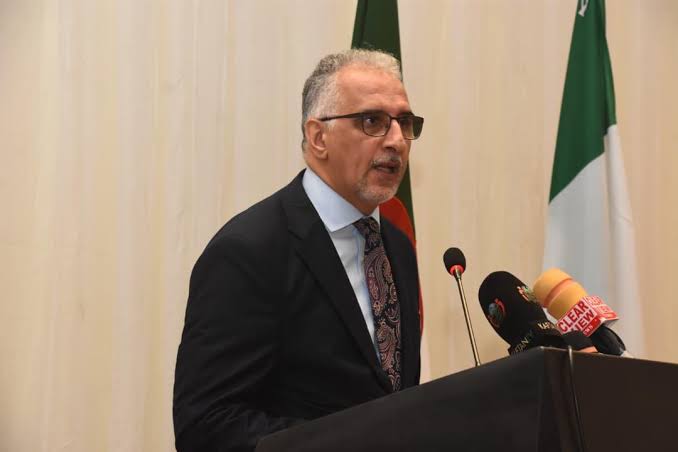
Algeria Calls for Continued Development, Stronger Ties with Nigeria
By: Michael Mike
Algeria’s Ambassador to Nigeria, Hocine Mezoued has reaffirmed his country’s commitment to sustainable development and stronger ties with Nigeria.
He gave the commitment in Abuja at the commemoration of the 71st anniversary of the outbreak of the National Liberation Struggle and Algeria’s National Day celebration.
The event drew senior representatives of the Nigerian government, members of the diplomatic corps, legislators, and other distinguished guests.
In his address, Ambassador Mezoued paid homage to the more than five million Algerian martyrs who lost their lives during the 132-year anti-colonial struggle, noting that the November Revolution remains “an inexhaustible source of pride and patriotism” for the Algerian people.
He emphasized that Algeria’s victory in securing independence in 1962 laid the groundwork for a nation strongly focused on development. He said: “Since its independence, Algeria has implemented national strategies and major development projects that have yielded remarkable achievements in human, economic, social, and environmental spheres.”
The envoy while underlining the country’s economic strength, noted that Algeria is currently the third-largest economy in Africa, with a GDP estimated at around US$300 billion, and projections to reach US$400 billion by 2027, backed by positive macroeconomic indicators.
He stated that despite its economic ambitions, Algeria has maintained its social welfare commitments, claiming that citizens continue to enjoy free access to education and healthcare, along with government-supported efforts to ensure decent housing for all.
Mezoued’s message highlighted both the historical significance of Algeria’s struggle for independence and the nation’s forward-looking drive toward modernization and prosperity.
On his part, the Speaker of Nigeria’s House of Representatives, Rt. Hon. Tajudeen Abbas expressed the country’s commitment to deepening diplomatic and parliamentary cooperation with Algeria as both nations continue to strengthen their longstanding ties.
The Speaker, who was represented by the Chairman of the Nigeria–Algeria Parliamentary Friendship Group Committee, Hon. Abubakar Babazango, in goodwill message described the anniversary as a moment of deep significance for Algeria and the entire African continent. He paid tribute to the courage and resilience of the Algerian people, whose struggle for liberation, launched 71 years ago, remains “an enduring symbol of hope” for oppressed peoples worldwide.
He said: “This day reminds us of the unity and sacrifice of the Algerian people who rose with determination to reclaim their freedom and dignity.”
He highlighted the strong diplomatic ties between Nigeria and Algeria, noting that both countries share a history of solidarity and a common vision for peace, development, and prosperity in Africa. He emphasized the role of the Nigeria–Algeria Parliamentary Friendship Group in fostering collaboration across key sectors, including trade, education, energy, and cultural exchange.
He said: “As we mark this historic occasion, may the friendship between Nigeria and Algeria continue to grow in unity and progress.”
The event was attended by members of the diplomatic corps, government officials, legislators, and other distinguished guests.
Algeria Calls for Continued Development, Stronger Ties with Nigeria
-

 News2 years ago
News2 years agoRoger Federer’s Shock as DNA Results Reveal Myla and Charlene Are Not His Biological Children
-

 Opinions4 years ago
Opinions4 years agoTHE PLIGHT OF FARIDA
-

 News8 months ago
News8 months agoFAILED COUP IN BURKINA FASO: HOW TRAORÉ NARROWLY ESCAPED ASSASSINATION PLOT AMID FOREIGN INTERFERENCE CLAIMS
-

 Opinions4 years ago
Opinions4 years agoPOLICE CHARGE ROOMS, A MINTING PRESS
-
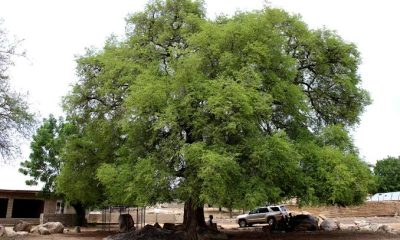
 News2 years ago
News2 years agoEYN: Rev. Billi, Distortion of History, and The Living Tamarind Tree
-

 ACADEMICS2 years ago
ACADEMICS2 years agoA History of Biu” (2015) and The Lingering Bura-Pabir Question (1)
-

 Columns2 years ago
Columns2 years agoArmy University Biu: There is certain interest, but certainly not from Borno.
-
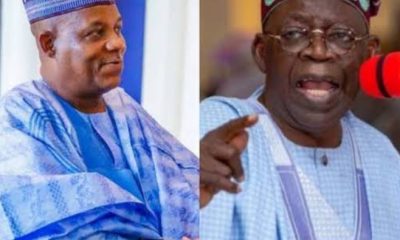
 Opinions2 years ago
Opinions2 years agoTinubu,Shettima: The epidemic of economic, insecurity in Nigeria





